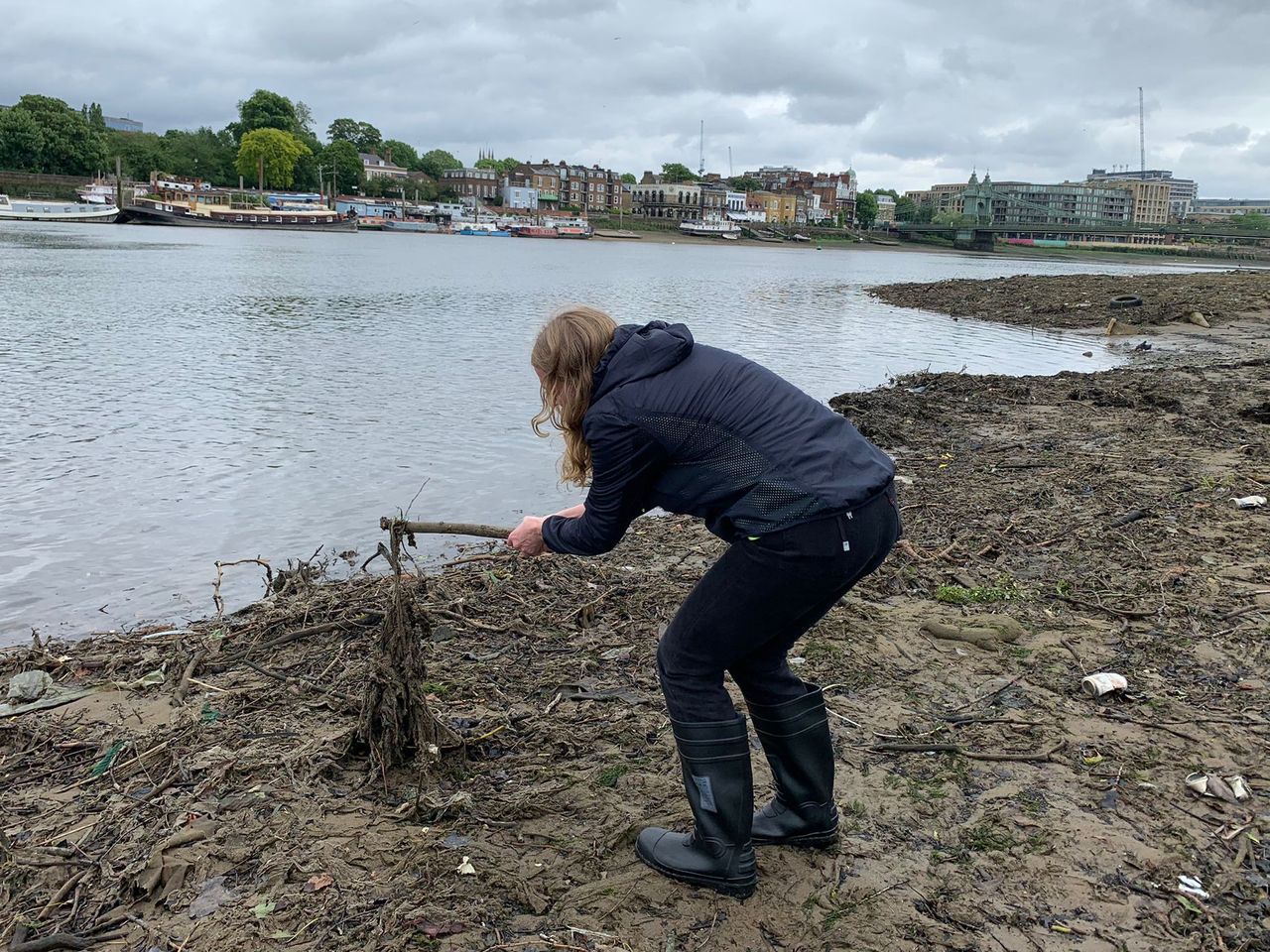LONDON—On a spring day this year, spectators gathered on the banks of the River Thames to watch Oxford and Cambridge universities compete in the annual Boat Race.
Rowers were urged to avoid coming into contact with the water, which had earlier tested with high levels of E. coli. The Cambridge men shunned the traditional victory celebration of throwing their coxswain into the water, with their coach instead promising to find a bucket of clean, sanitized water to douse him.
“It would have been ideal not to have so much poo in the water,” one rower told the BBC after the race.
The cause of the River Thames’ foul water is rooted in London’s Victorian-era sewers and the failure of one of the world’s largest experiments in private-sector water investment.
Thames Water, England’s biggest water company and the steward of its most famous river, is on the verge of financial disaster. The utility’s parent company, controlled by an array of sovereign wealth and pension funds, defaulted on its debt in April. Investors worry more of its roughly £18 billion in overall debt, equivalent to around $23 billion, could be at risk of losses even though much is meant to be secured against the water company’s assets.
What was meant to be a supersafe investment in a business that has a natural monopoly, has turned into a financial debacle, pushed further into crisis by the increase in interest rates . Thames Water’s troubles have cast a shadow over infrastructure investment, an area fashionable among risk-averse, long-term investors.
Environmental critics say Thames Water loaded up on debt to pay investors dividends while failing to upgrade London’s sewer system, which has spilled the equivalent of at least 34,000 Olympic swimming pools of raw sewage into the river since 2020.
Near central London, a matted mountain of wet wipes and sanitary products that washed into the river along with sewage has been dubbed “Wet Wipe Island.” On a recent day, a dog gleefully rolled around in the detritus.
Thames Water has become a political lightning rod in the U.K.’s July 4 election , where polling suggests the Labo u r Party will push Prime Minister Rishi Sunak ’s Conservatives from power. In its election manifesto, Labour said it would give regulators power to block water executive bonuses, impose severe fines and bring criminal charges against serial polluters.
How a new government deals with Thames Water’s debt will be watched around the world as countries wrestle with the rising role of private finance in the business of purveying water.
Most water-and-sewerage systems in the U.S. are still publicly owned, though cash-strapped local governments have in recent years turned to players such as French utility Veolia Environnement and publicly traded American Water to operate their networks .
Dieter Helm , a University of Oxford professor who studies privatization, says part of the blame for the U.K.’s water problems rests with the government regulator, Ofwat, which failed to balance the competing interests of investors, who sought profits, and consumers, who wanted low bills and good service.
“People think this is a problem of privatization, that capitalism has failed,” said Helm. “The right lesson is not that we need to nationalize stuff. It’s that we need to regulate it properly.”
Ofwat said it closely monitors companies’ financial health and has new powers to intervene if dividends don’t match environmental performance or service to customers.
A spokesperson for Thames Water said the company is committed to stopping sewage spills and noted the opening of a long-awaited sewage tunnel next year that is expected to drastically reduce spills in the river.
Private water
Prime Minister Margaret Thatcher privatized Thames Water and nine other regional water-and-sewer authorities in 1989. They were listed on the London Stock Exchange with £1.5 billion in cash shared among them and all debts erased.
The companies needed money to upgrade long-neglected infrastructure and meet new European water-quality rules.
There were initially big improvements, said Roger Wood, who worked as an infrastructure and utilities banker in the U.K. at the time. Investment in the industry nearly doubled to £6.3 billion a year in the decade following privatization, according to government data adjusted for inflation.
But in the 2000s, Wood said private owners shifted focus to boosting shareholder returns.
Australian infrastructure giant Macquarie Group ’s asset-management arm pulled together a consortium to take over Thames Water in a leveraged buyout in 2006. Under Macquarie’s ownership, the company’s corporate structure grew more opaque and more indebted, with eight entities under a parent company named Kemble Water.
Much of the debt was issued by the operating company, which is required to hold an investment-grade credit rating, and is secured against its assets. But the subsidiaries were used to issue lower-graded debt. Kemble then used the proceeds to invest in the water business and pay down money it borrowed for the acquisition. Using subsidiaries got around government rules that limit debt at the operating company.
Debt for dividends
Debt was an attractive source of funding in the era of low interest rates, and juiced dividends to shareholders, according to University of Greenwich visiting professor David Hall.
U.K. water-and-sewerage companies have paid an inflation-adjusted £73 billion in dividends since 1990, according to his research. At the same time, the industry’s net debt reached £61 billion last year.
Macquarie said last summer in a report in response to criticism of its ownership that it earned an average annual return of between 12% and 13% in the period it owned Thames Water. Those returns are standard for the industry, said Macquarie. It pointed to improvements under its ownership, such as a 22% decline in leaks.
Industry groups and investors place the blame for Thames Water’s decline on the regulator for emphasizing low customer bills. Water bills have fallen 13% over the past decade when adjusted for inflation, according to industry group Water UK, though they are up nearly 50% since privatization.
By the time Macquarie sold its stake in 2017 to a consortium led by the Canadian pension fund Omers, Thames Water’s debt had swelled to £11 billion from £3.2 billion. Other shareholders include the sovereign-wealth funds of the United Arab Emirates and China, along with the Universities Superannuation Scheme, the U.K.’s largest private pension fund.
Shareholders haven’t taken money out of the business since 2017, though Thames Water continued to send money to its parent entity to pay debt. Over the past five years, the company’s capital spending totaled £5.8 billion, according to Moody’s Investors’ Services. Its interest costs, meanwhile, swelled to £3.8 billion, though some of that isn’t owed to investors until the debt matures.
Sprung a leak
The postpandemic surge in inflation and interest rates rocked Thames Water. The company hadn’t locked in its borrowing costs when rates were low and more than half of its debt was linked to an index of inflation .
At the same time, the lack of investment in the face of strong population growth began to show up in the U.K.’s water quality. Victorian-era sewers handle both sewage and rainfall. Heavy rains, made more common by climate change , cause frequent overflows, spilling sewage into rivers and beaches.
In March, the sovereign wealth and pension funds that control Thames Water reneged on an earlier plan to give the company £750 million after learning regulators weren’t likely to approve their proposal to increase customer bills by 40%. Ofwat is expected to deliver its formal assessment of the company’s plan after the election.
Thames Water said it had £2.4 billion in cash at the end of February, enough to keep the business going through next May. Without new equity, however, the government could begin insolvency proceedings. It would be restructured and sold on to new owners, though some question who would be interested.
“Water is the most natural of monopolies, and should be at the lowest end of the risk spectrum,” said Wood, the infrastructure banker. “You have to screw up quite badly to put a regulated water company on the brink of special administration.”
Omers in May wrote the value of its 31.8% stake down to zero. Its chief executive, Blake Hutcheson , has played down the impact it will have on its 600,000-plus members.
“It is a fraction of 1% of your portfolio,” Hutcheson said at the fund’s annual meeting. “It’ll affect the returns in a very, very insubstantial way, like a few dips maybe.”
Meanwhile, polluted water has become a fact of life across the U.K. Marlene Lawrence runs a London swim group and has noticed the water getting worse. She doesn’t put her head below the surface. Once, she found a piece of building insulation in her bathing suit. But she remains undeterred.
“Until we see dead fish, I will keep swimming in the Thames,” she said.
Write to Chelsey Dulaney at chelsey.dulaney@wsj.com



